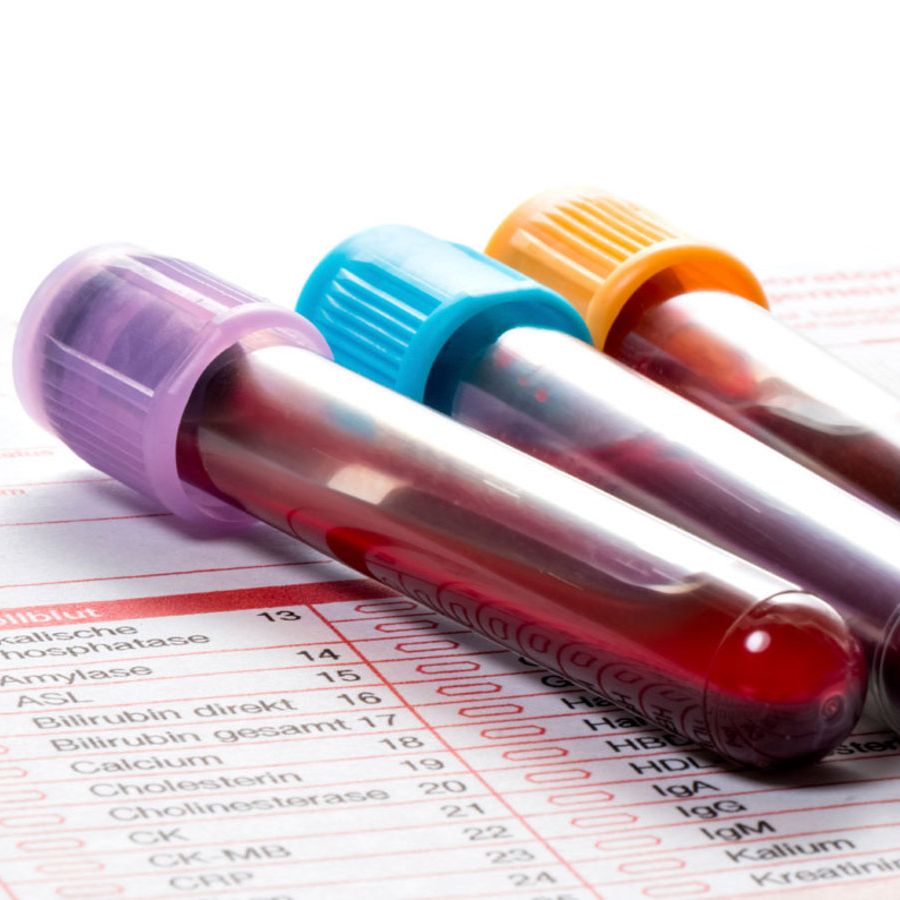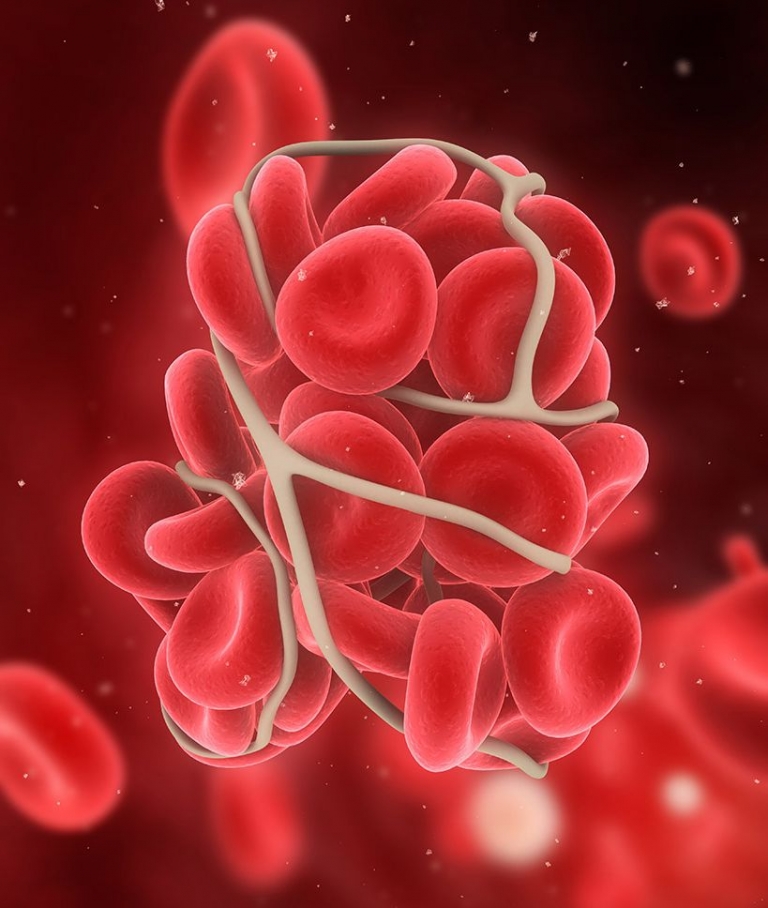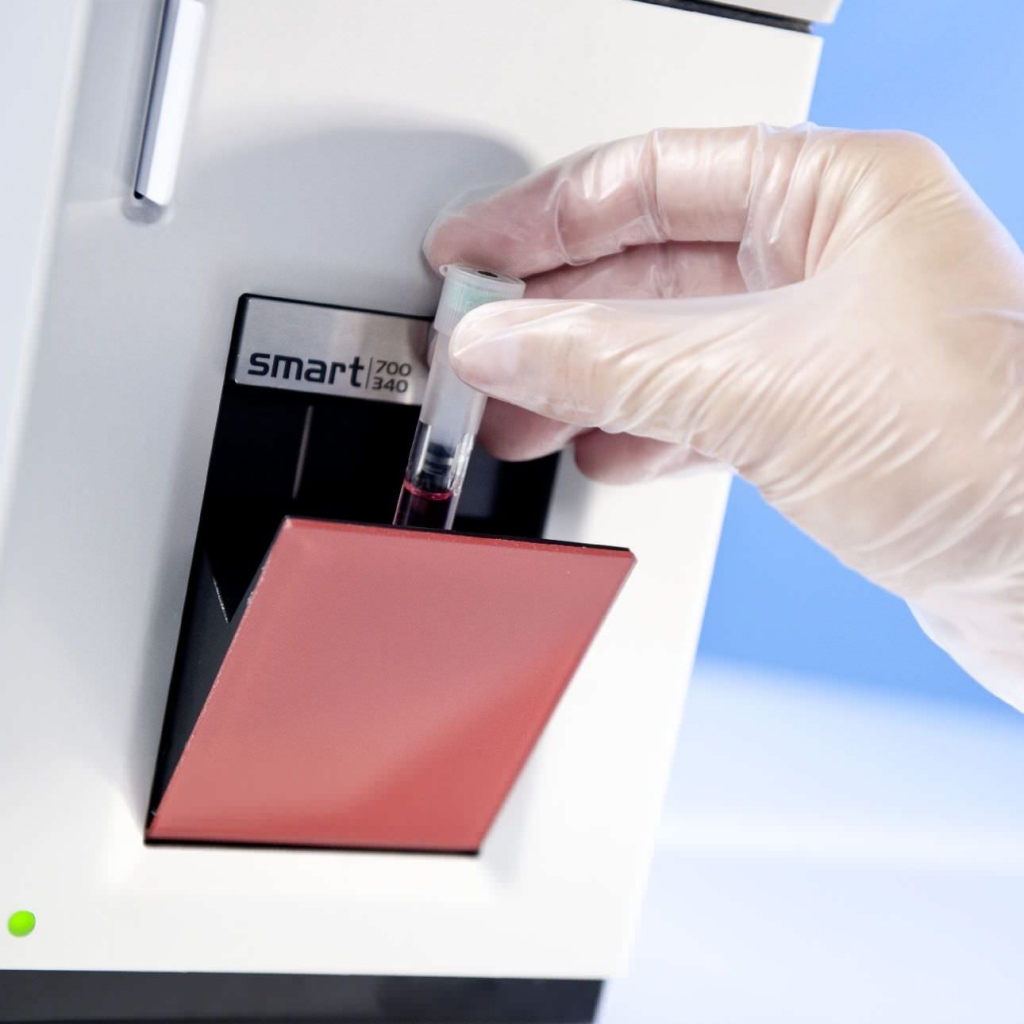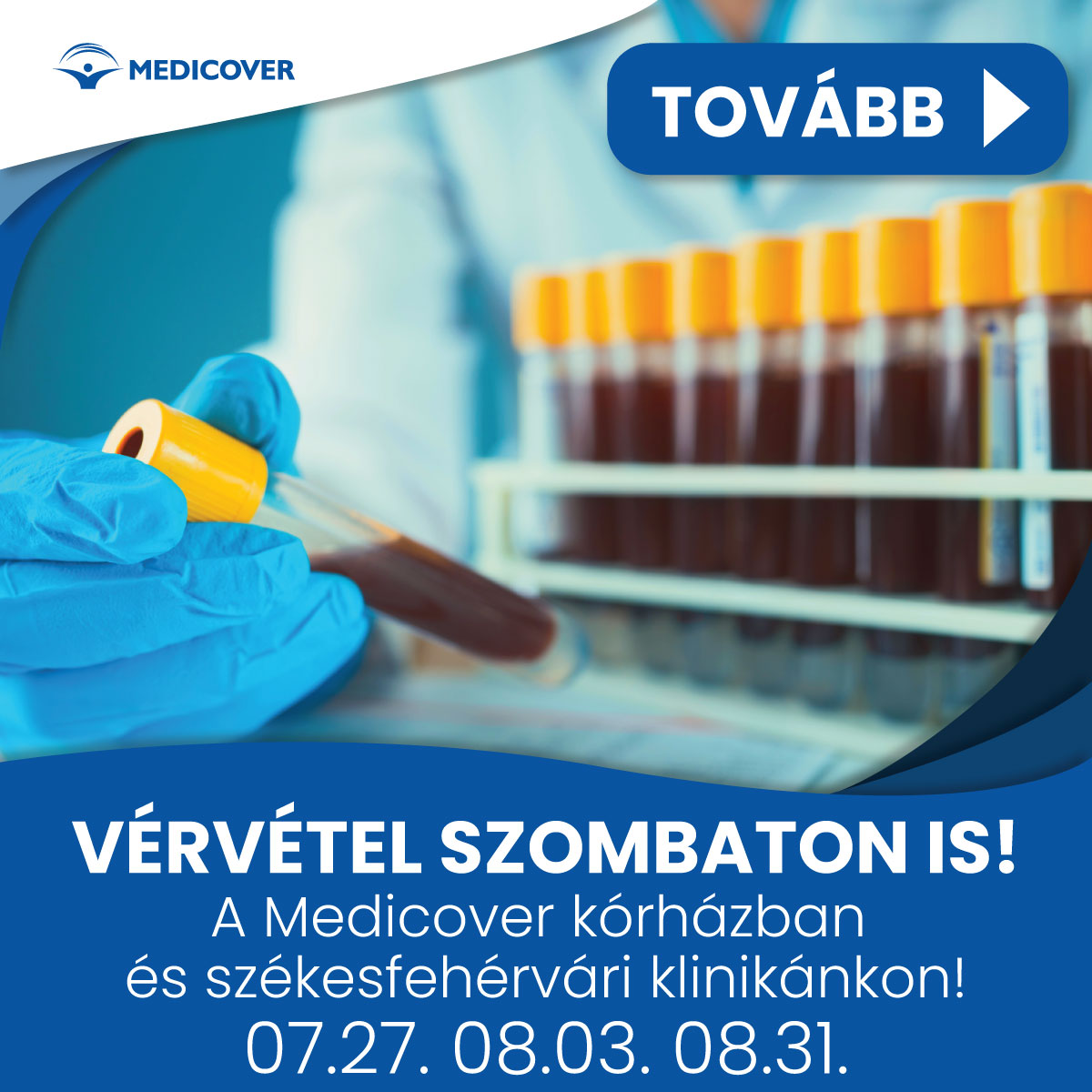Hematology and coagulation tests
Laboratory tests help to identify underlying diseases of the patient, and help doctors to diagnose illnesses of the patient.
However, it is important to emphasize that based on the results of a laboratory test, the exact diagnosis cannot be made on its own, the finding contains only the obtained results. You can get the diagnosis, therapy or treatment recommendation from your doctor.
In all cases, please consult your doctor about your laboratory test results.

The process of coagulation
Coagulation is a complex and multifactorial process that results in liquid blood becoming solid. From a physiological point of view, the prevention of further blood loss following an injury is the ultimate goal of coagulation.
During blood clotting, platelets and clotting factors (proteins) make thrombin from prothrombin, which is fixed by a strong network (fibrin network). The fibrin network, together with the adherent platelets, creates a blood clot that prevents further blood loss. Later (healing phase), the body breaks down and removes blood clots.
Coagulation disorders
A coagulation disorder is a condition that is associated with increased bleeding or increased clotting.
Haemophilia
In case of hemorrhage, the amount or activity of proteins essential for coagulation is reduced, and in some cases it is not produced at all. Hemorrhage can be acquired or inherited (hemophilia A and B, lack of certain coagulation factors).
The most common health problems with bleeding are:
Menstruation with heavy bleeding
Anemia
Blood coagulation, thrombophilia
In the case of blood clotting or thrombophilia, the blood clotting is well above normal. The resulting blood clots cause blockages in the blood vessels. Increased tendency to clot can occur due to genetic mutations – the Leiden mutation -, certain diseases or the use of medicines.
In case of increased blood clotting, the following conditions may occur:
Deep vein thrombosis
If a blood clot forms in one of the deep-running veins in the body, we can talk about deep vein thrombosis. It mostly occurs in the legs, it effects the thighs as well as the blood vessels running in the calf. The most common symptoms of deep vein thrombosis are swelling and warmth of the affected limb, as well as purple-red discoloration of the skin in the area.
Heart attack
A myocardial infarction occurs when a blood clot in the heart clogs or greatly narrows an artery. Insufficient blood supply to the heart muscle leads to myocardial necrosis. In some cases, there may be no detectable signs, but there are symptoms that indicate the presence of a heart attack. These include chest pain in the direction of the shoulder, arm or back, a feeling of medium pressure in the chest, more frequent chest pain, and sweating, shortness of breath, nausea / vomiting.
Stroke
Stroke is a condition in which inadequate blood flow leads to brain tissue damage. Its main symptoms are sudden blurred vision, dizziness, loss of balance, unexpected, severe headache, memory impairment, voice formation problems, speech comprehension problems, numbness of one side of the body, or spatial orientation, and disturbance in perception.
Problems during pregnancy (pregnancy high blood pressure, risk of deep vein thrombosis)


Coagulation laboratory tests
Blood coagulation laboratory tests usually check the coagulation of the blood and the function of the enzyme system that regulates blood clotting. To diagnose diseases that cause increased blood clotting, the D-dimer test is complemented by additional laboratory tests and imaging procedures.
Hematology tests
Hematology deals with the diseases of the hematopoietic and lymphatic organs, including hemostasis, which deals with disorders of blood clotting. The most common hematological laboratory tests examine the quantitative and qualitative changes in white blood cells, red blood cells, and platelets.
Available laboratory tests
Antitrombin III
APC resistance
Activated Partial Thromboplastin Time (aPPT)
D-Dimer
Fibrinogen activity
Glutation reductase
Homocysteine
Lupus anticoagulant test
Protein C activity
Protein S activity
Prothrombin INR
Thrombin time
Blood typing with RH factor and antibody level definition for medical indication
Newborn blood typing
Complete blood count (erythrocyte count – RBC, hematocrit – HTC, hemoglobin – HGB, white blood cell count, neutrophil, monocyte, lymphocyte, eosinophil and basophil % and absolute count – FVS, platelet count – THR, MCV, MCH, MCHC, MPV)
Blood count + Reticulocyte count
Erythrocyte sedimentation rate (ESR)

